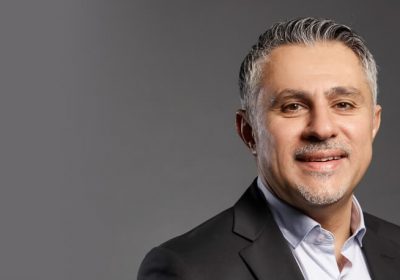
- Author: Dr Paige Williams
- Posted: May 2, 2022
The Accountability Conversation CFOs Need to Have
Accountability can be tricky. The implications of calling people to account and letting the consequences of their actions unfold can be significant and wide-reaching. It’s understandable that we often choose to turn away from the hard work of it.
The thing is, the implications of turning away are also significant and wide-reaching. And if we weren’t good at it before (and let’s face it, most of us weren’t), the added complexity of COVID and its impact on employees, team structures and ways of working have made accountability feel even harder. When I talk to leaders around the world, I’m hearing things like:
• ‘It feels harder to lead a hybrid and distributed workforce – it takes more time, effort and energy.’
‘My people’s priorities and expectations of work and life have changed – what was okay before is less okay now.’
• ‘Accountability conversations can be tricky at the best of times – they’re even harder when they’re in a virtual environment.’
Research suggests that clarity of accountability expectations is one of two critical factors that drive accountability success. And as I work with leaders and teams, I see the same. And that’s because clarity precedes action. Once we are clear about and agreed on what needs to happen, we can get on with doing it more effectively. Sounds simple, right?
Unfortunately, my experience tells me – as I’m sure yours does too – it’s often not that straightforward. One of the most common problems that I see in the teams and organisations I work with is with the language of accountability, and specifically the way in which the words ‘accountability’ and ‘responsibility’ are used interchangeably. This feeds confusion around accountability which means that we don’t feel confident asking for it. The thing is, it doesn’t have to. That’s because these terms have distinct definitions that are valuable to understand so that we can use them appropriately.
Understanding the terms of engagement
I really like the practical nature of the definitions used for accountability and responsibility in the RACI framework used for project management, as they are easily translated into the way work is done in groups, teams and organisations. They are:
Accountable – ‘the buck stops here’
This is the person or stakeholder who is the ‘owner’ of the work, and who must provide their sign-off or approval when the task, objective or decision is complete. This person must make sure that responsibilities are assigned for all activities related to the work. There is only one person who is accountable.
Responsible – ‘the work is done here’
These are the people or stakeholders who do the work. They are the ones who must complete the task or objective or make the necessary decisions. This means that, potentially, several people can be jointly responsible.
Cascading Clarity
I’ve seen the difference that creating clarity around this use of language can have in a team, and it is quite amazing. Once these terms are clearly defined, the work then becomes about ensuring that, as accountability is ‘cascaded’ down through the organisation and/or the team(s), the corresponding responsibilities go with it. This makes the accountability-responsibility trail clear.
The critical thing to remember is that delegation of responsibility must include a level of accountability as well. Here’s an example of what this could look like.
Case Study:
A CFO client of mine was accountable (‘buck stops here’) for preparing the firm’s annual report. As a senior leader, it wasn’t necessary or appropriate that she do all the tasks required to complete the report, and so she delegated responsibility (‘work is done here’) for some sections of the report to members of her leadership team. In delegating responsibility, she also made clear their accountabilities – that is, what ‘the buck stops here’ looked like for each of them in relation to the sections of the report that they were responsible for completing.
This clarity of accountability expectations gave the leadership team the confidence, autonomy and authority to further delegate responsibility to members of their teams to gather the information that would go into the sections of the annual report that they were drafting. At this point, they too defined what the ‘the buck stops here’ looked like for each of their team members by defining the specific information they needed to gather, the format it needed to be presented in, and the timeline required for the data to be ready so that the report section could be submitted to the CFO on time.
By defining and using accountability and responsibility as different but complementary terms, the CFO was able to be clear about expectations and cascade the appropriate levels of each through her team. It also provided an accountability/ responsibility ‘trail’ that meant everyone knew where the work was being done and by whom, which eliminated double handling of tasks and reduced underperformance.
Accountability is complex, fuzzy and confusing. One of the biggest challenges is that it means different things to different people – often in the same organisation, and even in the same team. Clarity precedes action. So once accountability and responsibility are clearly defined and the trail is clear, progress accelerates.
So, why not try mapping the accountability-responsibility cascade with your team? I guarantee it will make a difference.
About the Author –
DR PAIGE WILLIAMS, author of Own It! Honouring and Amplifying Accountability (Grammar Factory, $24.95) is a researcher, PhD in Organisational Behaviour and trusted advisor to senior leaders. She uses a potent blend of neuroscience, psychology and her own twenty-plus years of international business leadership experience to help leaders surface uncomfortable truths, see the rules they need to break in order to break through and lead themselves, their teams, and their organisations to thrive. Find out more at drpaigewilliams.com








